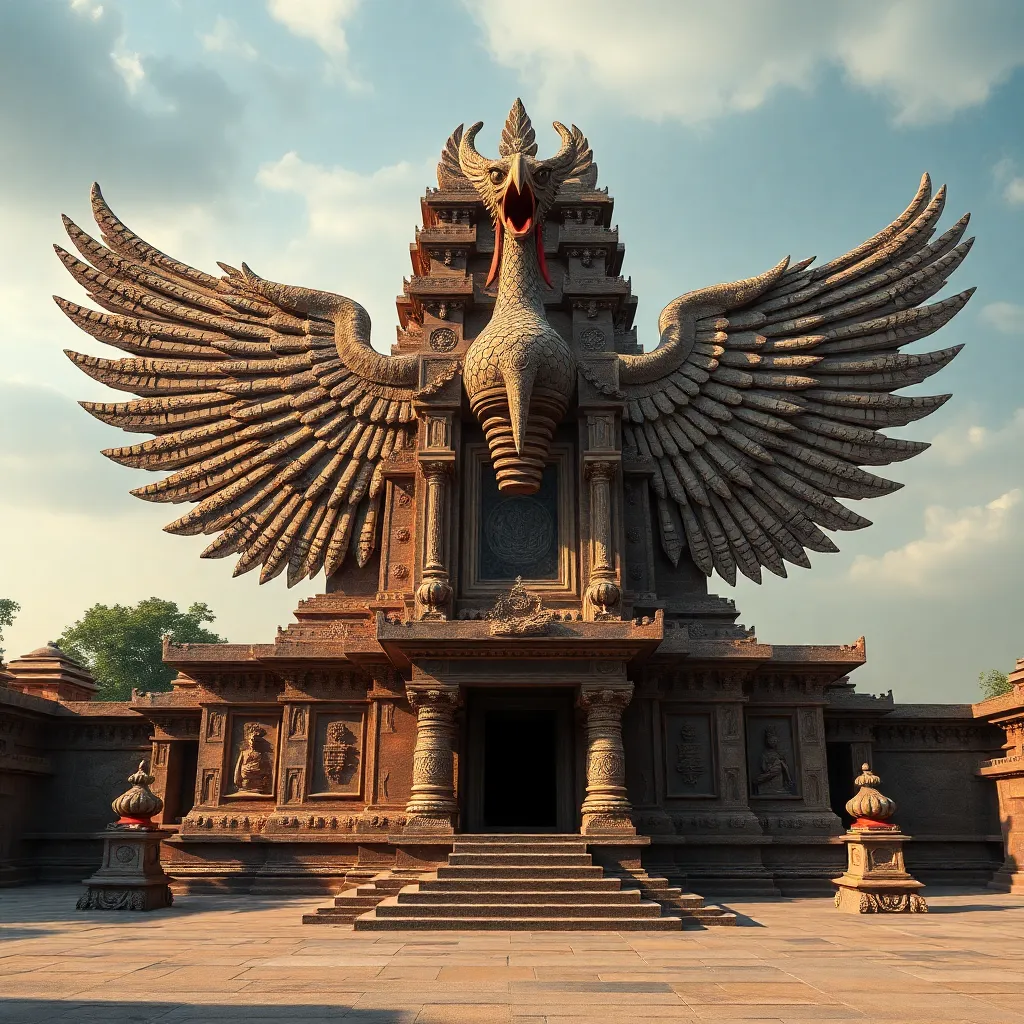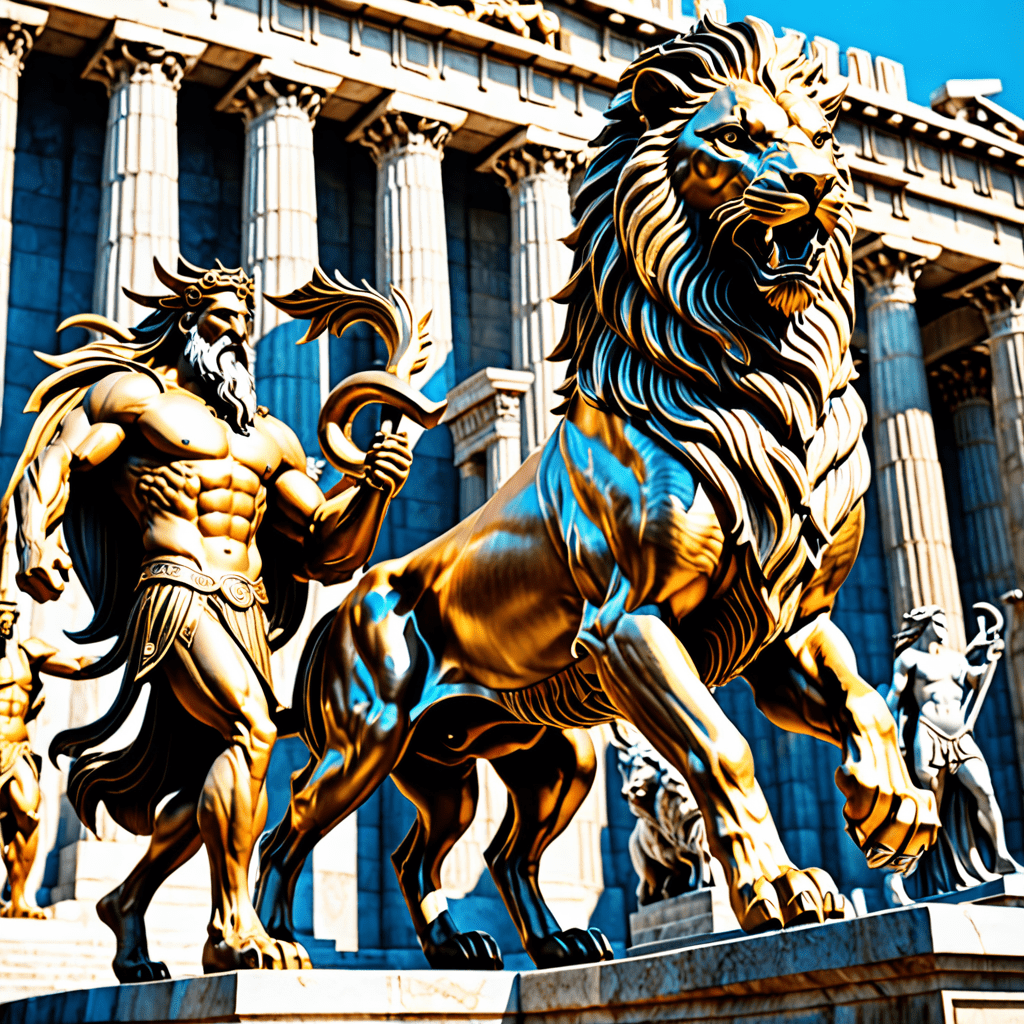The Garuda Temple: Unveiling the Sacred Sites Dedicated to the Avian Deity
Introduction to Garuda: The Avian Deity
In Hindu mythology, Garuda is revered as a powerful avian deity, often depicted as a bird-like creature with a human torso. He is known for his immense strength, speed, and loyalty, primarily serving as the mount of Lord Vishnu, one of the principal deities of Hinduism. Garuda’s significance transcends mere mythology; he embodies the virtues of courage, knowledge, and the ability to overcome obstacles.
As a symbol, Garuda represents the triumph of good over evil, often depicted in various texts and scriptures as a fierce protector. His connections to other deities and mythological narratives make him a central figure in the pantheon of Hindu gods, celebrated for his unwavering devotion to Vishnu and his role in numerous celestial battles.
Historical Background of the Garuda Temple
The origins of Garuda worship can be traced back to ancient texts such as the Vedas, Puranas, and the Mahabharata, where he is mentioned as a divine being with the power to fly at incredible speeds. Over the centuries, the reverence for Garuda has evolved, with temples dedicated to him emerging across the Indian subcontinent and beyond.
Key historical figures, such as various kings and emperors, played a crucial role in promoting Garuda worship. They established temples and contributed to the cultural significance of Garuda in their reigns. Significant events, including royal patronage and public festivals, have further cemented Garuda’s place in religious and cultural history.
Architectural Features of the Garuda Temple
The architectural styles of Garuda temples vary significantly, reflecting regional influences and historical contexts. However, there are common features that characterize these sacred spaces:
- Shikhara: The towering spire that is a hallmark of many Hindu temples, symbolizing the connection between the earthly and the divine.
- Mandapa: A pillared hall where devotees gather for worship and rituals, often adorned with intricate carvings and sculptures.
- Garuda Stambha: A pillar dedicated to Garuda, often found at the entrance of the temple, symbolizing his protective presence.
Iconography plays a crucial role in Garuda temples, with numerous artistic representations depicting him in various forms, often shown either in battle or in a peaceful pose beside Vishnu. The use of sacred geometry in temple layouts further enhances the spiritual ambiance, guiding devotees through a journey of worship and reflection.
Major Garuda Temples Around the World
Garuda temples can be found not only in India but also in various parts of Southeast Asia, reflecting the spread of Hinduism and the veneration of Garuda across cultures. Some notable temples include:
- Garuda Wisnu Kencana Temple (Bali, Indonesia): A massive cultural park featuring a giant statue of Garuda, symbolizing harmony and peace.
- Garuda Temple (Uttarakhand, India): A prominent pilgrimage site known for its serene environment and spiritual significance.
- Garuda Temple (Kerala, India): Features unique rituals and practices, attracting devotees from across the region.
These temples not only serve as places of worship but also as cultural landmarks, drawing pilgrims and tourists alike. Each site has its unique practices, rituals, and festivals, contributing to the rich tapestry of Garuda worship.
Festivals and Rituals Celebrated at Garuda Temples
Garuda temples are vibrant centers of celebration, particularly during festivals dedicated to Garuda. Major festivals include:
- Garuda Jayanti: Celebrating the birth of Garuda, this festival involves elaborate rituals, chanting of mantras, and processions.
- Vishnu Jayanti: As Garuda is closely associated with Lord Vishnu, this festival also includes the worship of Garuda, highlighting their divine connection.
During these festivals, traditional rituals, offerings, and ceremonies take place, with devotees participating in various activities to honor Garuda. The community plays a vital role in these celebrations, fostering a sense of unity and shared devotion among locals and pilgrims.
Spiritual Significance of Garuda Worship
The act of worshiping Garuda holds profound spiritual significance for many devotees. Garuda is often viewed as a symbol of liberation and protection from adversities. His image serves as a reminder that one can overcome life’s challenges through strength and resilience.
Personal stories and testimonials from devotees illustrate the transformative power of Garuda worship. Many report experiences of clarity, guidance, and a sense of peace that emerges from their connection to this divine figure. The rituals performed at Garuda temples often emphasize introspection and personal growth, further enhancing the spiritual journey of the worshippers.
Conservation and Challenges Facing Garuda Temples
Despite their cultural and spiritual importance, many Garuda temples face significant challenges. The current state of preservation varies, with some temples well-maintained while others suffer from neglect and modernization pressures.
Challenges include:
- Environmental factors such as pollution and climate change impacting the structural integrity of temples.
- Urbanization leading to encroachments and loss of sacred lands.
- Financial constraints for maintenance and restoration efforts.
Efforts by local communities and organizations are vital for the conservation of these sacred sites. Initiatives aimed at raising awareness, funding restoration projects, and promoting sustainable tourism can help protect these cultural treasures for future generations.
Conclusion: The Enduring Legacy of Garuda Temples
The legacy of Garuda temples is a testament to the rich cultural heritage and spiritual practices of Hinduism. Preserving these sacred sites is crucial, as they serve as a bridge between the past and the present, embodying the values and beliefs of countless generations.
In contemporary society, Garuda temples continue to play a pivotal role in fostering community, spirituality, and cultural identity. They invite exploration, reflection, and respect, encouraging both locals and visitors to engage with the profound significance of these sacred spaces. As custodians of cultural heritage, it is essential to advocate for the protection and appreciation of Garuda temples worldwide.



